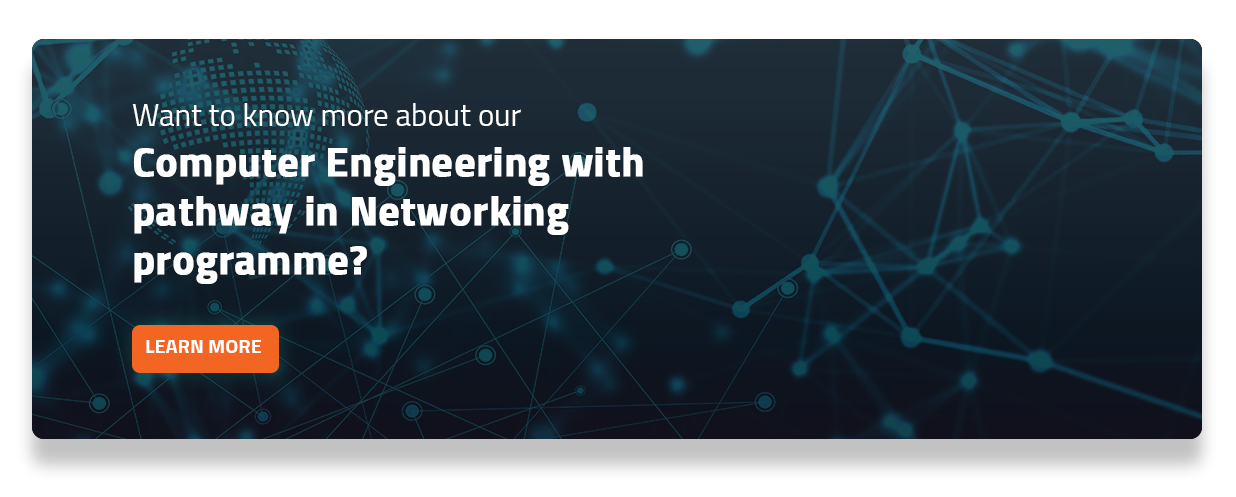The latest and the upcoming developments in networking will drive innovation.
Written by: Samiha Najah
Networking is expected to witness a digital transformation that can revolutionize its use in the next decade. The two major requirements that are leading the development of new Networking technologies are the need to increase the bandwidth in the Internet and voice networks and the need of digital workplaces for business. The next generation will be marked by more automation. During the last few years, Network vendors have worked on the automation in managing networks. In 2020, automation has reached a mature level and vendors started the incorporation of it for operating networks in their platforms.
Here are top 5 trends in networking to watch for:
5th Generation Network (5G)
The fifth generation of mobile networks 5g is a major telecommunication progress that started to be deployed worldwide in 2019. This networking technology brings significant potentials for business. (The Top 5 Networking Trends For 2019 – Wavestone 2020). With greater bandwidth and up to 10 GBPS in the download speed. It is expected that 5G will compete with the existing Internet Service Providers by connecting not only cellphones but also laptops and desktops. It brings also new possibilities for the Internet of Things and machine to machine communications.
5G is expected to change our lives in 5 main areas: Smart cities enabling it to handle greater amount of data and by install low power sensors, Industry by shifting towards smart factories thanks to the very fast wireless network, Driverless cars, Telemedicine and virtual spaces.
WIFI 6 (802.11ax)
Wifi 6, known also as “802.11ax” or “AX WiFi”, is the next generation of Wifi which was developed as a response to the consistent demands in term of number of connected devices and faster speed. Technically, Wi-Fi 6 provides more efficiency by packing more data in a signal and allows larger channel which speed up the WIFI. By using 1024-QAM modulation, it increases the capacity of connected devices up to 4 times more than the current WIFI 5. It is the ideal solution for “device-dense” environments, such as airports, stadiums, malls, etc.
Cloud computing
Public cloud proved its reliability and scalability during the last few years. It provides a cost-effective solution and easy deployment of high-quality resources (Sether 2016).
In 2020, enterprises are adopting more and more multi-cloud which will enable them to get the best option from each cloud vendor. As stated by Carolee Gearhart, the Global Channel Chief at Google “Gartner is estimating that by 2021, 75 percent of midsize and large organizations will have adopted multi-cloud or a hybrid strategy. When I think about that just in terms of where we are in the evolution that means 2020 is going to be a year of really big acceleration.” (Shacham 2020).
SD-WAN is one of fastest emerging segments in Networking technologies during the last two years. In 2020, it is expected that it will become the benchmark for the connections between branch offices and the cloud resources. All legacy applications will migrate to public cloud by 2024. Cloud providers will enhance their native optimization capabilities which will become a driver for the cloud adoption.
Many cloud providers are working on providing services closer to users. By 2023, the best cloud provider will have a distributed presence to support expanded service availability.
Internet of Things (IoT)
Internet of Things is one of the major technological advances during the last few years. It contributed to keep the world more connected, easier and smart.
The top 3 trends that will drive the advancements in this field are:
Artificial Intelligence (AI)
The future of IoT will be marked by an increased number of connected IoT devices and hence the data generated. By integrating Artificial Intelligence into IoT systems, the abilities of smart features will be increased, and wiser data management can be done. Machine Learning (ML) can be applied for data analytics and can generate meaningful insights which will help to make smart decisions.
Empowered edge computing
Edge computing is an emerging trend in the Internet of Things. It will help IoT devices to take instant decisions before sending the data to the cloud and hence enhance the latency between them and the cloud. More enterprises are now investing in edge computing technologies which will lead to the accuracy and high-quality transmissions.
Blockchain
Blockchain is one of the most important technology trends in IoT that leveraged the privacy and security vulnerabilities (WIRE 2020). With blockchain, the data can exchange in a reliable way using decentralized cryptography.
Enterprise Data centres
Will cloud computing replace traditional data centres?
Gartner expects that by 2025, 80% of enterprises will shift from on premises data centres to cloud models.
Currently, data centres remain an important part of IT technologies for enterprises. They are adapting with the emerging technologies such as 5G, Edge computing and Software Defined Network (SDN). Fast transmission and low latency must be offered by data centres as well as redundancy and reliability. 5 G offers increased speeds and capacity. Software and hardware must be upgraded in order to manage the important volume of data that can be brought by 5g and Edge computing.
Edge data centres are put in place in order to provide cloud computing services such as cash streaming and resources closer to IoT devices. Many enterprises are now looking for raising opportunities in Edge computing.
With Software defined Networks (SDN), a network will have the ability to automatically reconfigure to meet the demands of some applications and optimization. The software-defined data centre (SDDC) will be a standard for Data Centre operations using technologies such as: composability, hyper convergence, SDN and storage. (The Data Centre in 2019: Hot Technologies &Trends 2019)
To address the human resource requirement in these technologies, Middle East College offers two Engineering programmes to enable students to be qualified worldwide as an Engineer in his/her specialization and to face future challenges with confidence and merit.
The BEng (Hons) Computer Engineering programme with pathway in Networking includes modules focusing on latest technological advancement and trends such as IoT Concepts and Architecture, Cloud Computing, Concepts of Virtualization, Enterprise Data Centre and WAN connectivity.
The BEng (Hons) Computer Engineering programme with pathway in Information Security includes modules focusing on topics such as Data Storage, Enterprise Data centre, Ethical Hacking, Computer Forensics, IoT Concepts and Architecture, Cloud Computing and many more.






